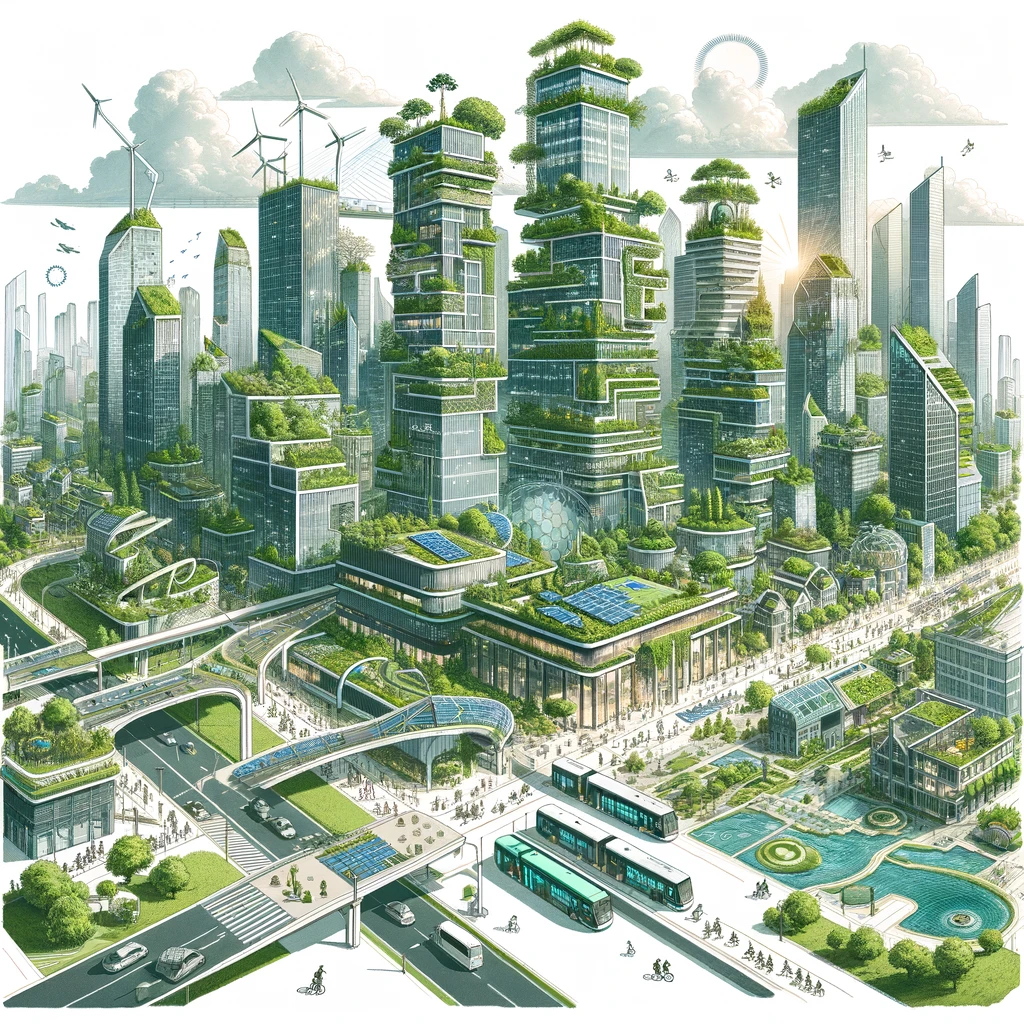
Sustainable architecture is not just a trend; it’s a necessity for our planet’s future. As we face pressing environmental challenges, the way we design and construct buildings must evolve to minimize our ecological footprint and promote long-term sustainability. In this article, we will explore the key factors shaping the future of sustainable architecture, the tradeoffs involved, and the challenges we must overcome to create a built environment that is both environmentally responsible and aesthetically pleasing.
Understanding Sustainable Architecture
Defining Sustainable Architecture
Sustainable architecture, also known as green architecture or eco-friendly design, is an approach to building design and construction that seeks to minimize environmental impact while maximizing resource efficiency and occupant well-being. It encompasses a wide range of strategies, including energy efficiency, material selection, waste reduction, and the integration of natural elements into the built environment.
Key Factors Impacting the Future of Sustainable Architecture
1. Energy Efficiency
Energy efficiency remains a cornerstone of sustainable architecture. In the future, buildings will need to be designed to consume minimal energy while still providing comfortable living and working spaces. This will require innovative approaches to insulation, ventilation, lighting, and heating and cooling systems, as well as the widespread adoption of renewable energy sources such as solar and wind power.
2. Material Selection and Lifecycle Assessment
The choice of building materials has a significant impact on the environmental sustainability of a structure. In the future, architects and designers will need to prioritize materials that are low in embodied energy, non-toxic, and recyclable or biodegradable at the end of their lifecycle. Life cycle assessment (LCA) tools will play a crucial role in evaluating the environmental impact of different materials and construction methods.
3. Biophilic Design and Human Well-being
Biophilic design, which seeks to connect people with nature through the integration of natural elements into the built environment, will become increasingly important in the future of sustainable architecture. Incorporating features such as living walls, green roofs, and natural lighting not only enhances the aesthetic appeal of buildings but also promotes occupant health and well-being by reducing stress, improving air quality, and increasing productivity.
Tradeoffs and Challenges
1. Cost vs. Benefit
One of the primary tradeoffs in sustainable architecture is the balance between the upfront cost of green building features and the long-term benefits they provide. While sustainable design elements may require a higher initial investment, they often result in lower operating costs, improved occupant satisfaction, and increased property value over time. Architects and developers must weigh these factors carefully when making design decisions.
2. Aesthetics vs. Performance
Achieving a balance between aesthetic design goals and performance requirements can be challenging in sustainable architecture. While certain green building features may be highly effective from a performance standpoint, they may not always align with the desired aesthetic vision for a project. Finding creative solutions that marry form and function will be essential in the future of sustainable architecture.
Challenges and Opportunities
1. Regulatory Support and Incentives
Government policies and incentives can play a crucial role in promoting sustainable architecture. In the future, we need to see greater support for green building standards, energy efficiency incentives, and tax breaks for sustainable construction practices. By providing regulatory certainty and financial incentives, policymakers can encourage architects, developers, and builders to prioritize sustainability in their projects.
2. Technological Innovation
Advancements in technology will continue to drive innovation in sustainable architecture. From smart building systems and advanced energy management technologies to 3D printing and modular construction methods, there is a vast array of opportunities to enhance the environmental performance of buildings. Investing in research and development and fostering collaboration between industry stakeholders will be essential to unlocking the full potential of these technologies.
Conclusion
The future of sustainable architecture holds immense promise for creating a built environment that is both environmentally responsible and socially beneficial. By prioritizing energy efficiency, material sustainability, and biophilic design principles, we can create buildings and communities that enhance the quality of life for occupants while minimizing our impact on the planet. However, achieving this vision will require collaboration, innovation, and a commitment to sustainability from all stakeholders involved in the design, construction, and operation of buildings.

Alex Rivera
Alex RiveraAlex Rivera is a dedicated environmental writer and editor with a degree in Environmental Studies from the University of Northern Iowa. With over eight years in the field, Alex specializes in topics ranging from renewable energy and climate technology to sustainable living practices. Known for combining thorough research with personal experiences, Alex's work is both informative and relatable. Their commitment to promoting a healthier planet shines through in every article, making them a respected voice in environmental journalism.
